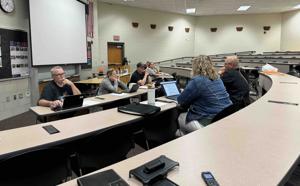Urgent Insights on DITA Implementation Transforming Content Strategy

URGENT UPDATE: Organizations are rapidly transforming their content strategies with the implementation of the Darwin Information Typing Architecture (DITA), a modular framework that promotes clarity and accessibility in information management. This shift, confirmed by recent studies, highlights the critical role of embracing diverse viewpoints in shaping effective communication across various audiences.
As the demand for adaptable content grows, organizations are turning to DITA, an XML-based architecture initially developed by IBM in the early 2000s. DITA’s modular approach encourages the creation of small, reusable content modules, significantly enhancing collaboration and efficiency in content management.
The pressing need for organizations to communicate effectively has never been more evident. By integrating diverse perspectives from writers, developers, and subject matter experts, companies can build a richer content strategy. This integration is essential, as it fosters a user-centric approach that resonates with audiences worldwide.
Key Insights from DITA Implementation:
1. **User-Centric Approach:** Engaging end-users in the content creation process ensures that documentation meets their needs and expectations. Gathering feedback from stakeholders leads to more user-friendly outputs.
2. **Cross-Department Collaboration:** DITA’s structure promotes cooperation among teams. Writers work closely with engineers for technical accuracy and collaborate with marketing for enhanced appeal, ensuring alignment toward shared goals.
3. **Cultural Sensitivity:** In a global marketplace, recognizing cultural differences is vital for effective communication. Insights from culturally diverse team members help tailor messaging, ensuring relevance across regions.
4. **Innovation Through Conflict:** While diverse viewpoints can spark conflict, this tension can drive innovation. Challenging established norms encourages teams to pursue new ideas and solutions, reinforcing a dynamic DITA framework.
Organizations are learning crucial lessons through their DITA journey, emphasizing the importance of adaptability. Flexibility is key; as feedback is gathered, processes must evolve. Teams are encouraged to undergo training sessions that promote an understanding of DITA principles, ensuring all members can contribute meaningfully.
Moreover, fostering open communication is essential. Regular brainstorming sessions help surface valuable insights that enhance content quality. Utilizing technology, such as content management systems and collaborative platforms, empowers teams to maximize the benefits of diverse insights.
In summary, the journey of implementing DITA is not solely about technology; it is fundamentally about the people involved. By valuing diverse viewpoints and fostering an inclusive environment, organizations can unlock a wealth of insights that significantly enhance their content strategies. This cultural shift toward collaboration and adaptability will be vital as they navigate the complexities of content creation.
Stay tuned for more updates as organizations continue to embrace DITA, reshaping how they communicate with diverse audiences around the globe. This evolution not only impacts content quality but also enhances the overall user experience, making it a pivotal moment in information management.






